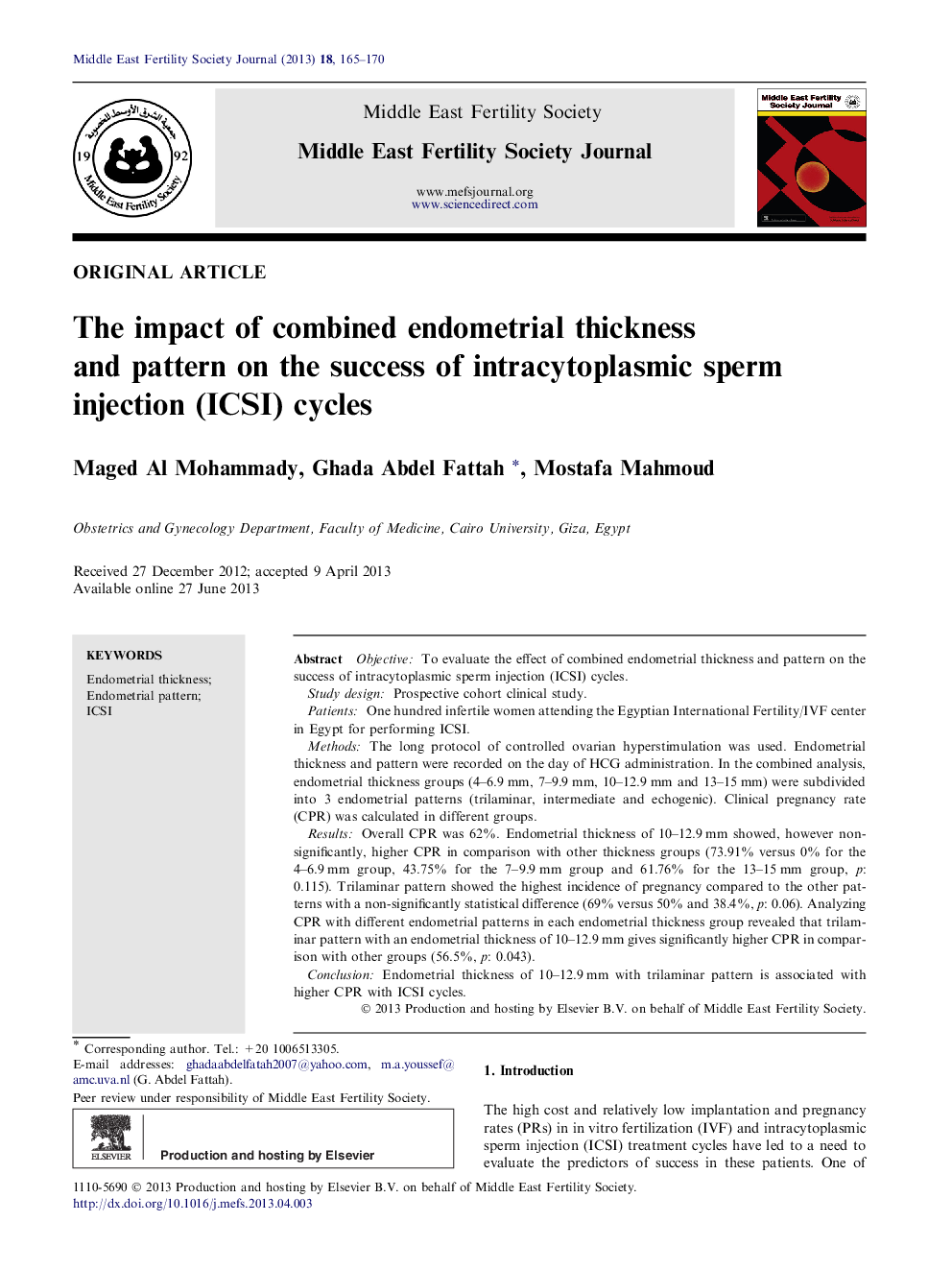| Article ID | Journal | Published Year | Pages | File Type |
|---|---|---|---|---|
| 3966286 | Middle East Fertility Society Journal | 2013 | 6 Pages |
ObjectiveTo evaluate the effect of combined endometrial thickness and pattern on the success of intracytoplasmic sperm injection (ICSI) cycles.Study designProspective cohort clinical study.PatientsOne hundred infertile women attending the Egyptian International Fertility/IVF center in Egypt for performing ICSI.MethodsThe long protocol of controlled ovarian hyperstimulation was used. Endometrial thickness and pattern were recorded on the day of HCG administration. In the combined analysis, endometrial thickness groups (4–6.9 mm, 7–9.9 mm, 10–12.9 mm and 13–15 mm) were subdivided into 3 endometrial patterns (trilaminar, intermediate and echogenic). Clinical pregnancy rate (CPR) was calculated in different groups.ResultsOverall CPR was 62%. Endometrial thickness of 10–12.9 mm showed, however non-significantly, higher CPR in comparison with other thickness groups (73.91% versus 0% for the 4–6.9 mm group, 43.75% for the 7–9.9 mm group and 61.76% for the 13–15 mm group, p: 0.115). Trilaminar pattern showed the highest incidence of pregnancy compared to the other patterns with a non-significantly statistical difference (69% versus 50% and 38.4%, p: 0.06). Analyzing CPR with different endometrial patterns in each endometrial thickness group revealed that trilaminar pattern with an endometrial thickness of 10–12.9 mm gives significantly higher CPR in comparison with other groups (56.5%, p: 0.043).ConclusionEndometrial thickness of 10–12.9 mm with trilaminar pattern is associated with higher CPR with ICSI cycles.
